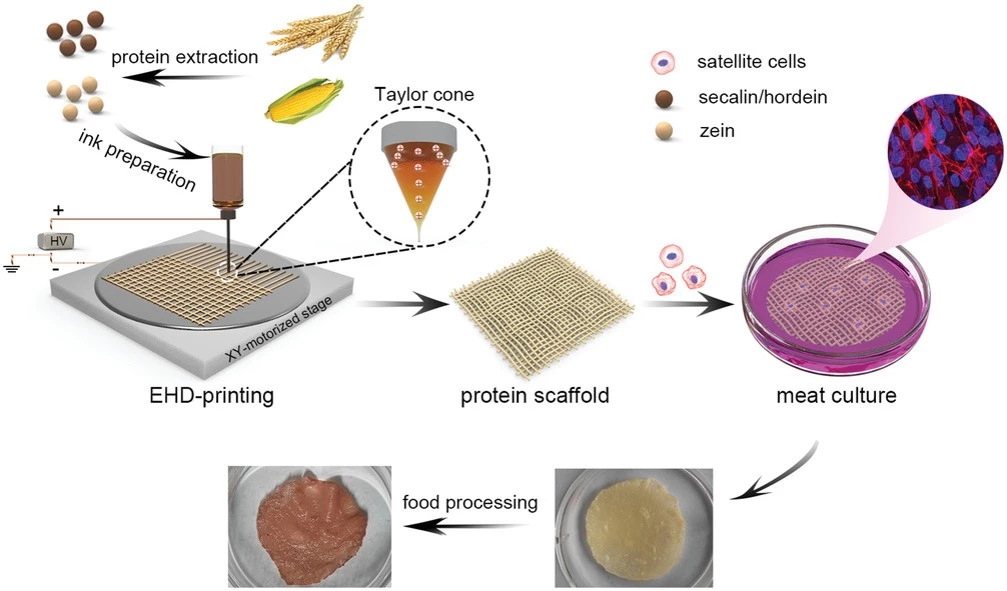Although great strides are being made in the field of lab-grown meat, the stuff is still quite expensive to produce. A new 3D-printing ink could help, while also making use of agricultural waste that would otherwise be discarded.
Currently in the production of "cultured meat," animal muscle cells are seeded onto a three-dimensional scaffold-like structure, which mimics the fibrous structure of natural meat. As the cells reproduce, they take over that scaffold, eventually resulting in a solid piece of meat with the desired texture.
Needless to say, the scaffolds have to be made of edible materials.
One option is to use animal byproducts such as collagen or gelatine, although doing so sits at odds with buying cruelty-free cultured meat in the first place. Another approach involves using synthetic materials, but these can be pricey.
Seeking a non-animal low-cost alternative, scientists from China's Xi’an Jiaotong-Liverpool University and the National University of Singapore looked to crop waste.
More specifically, they combined cereal proteins known as prolamins – extracted from barley or rye husks – with a corn protein called zein, to create an edible 3D-printing ink. That ink was then used to build scaffolds which were utilized in the production of cultured mouse meat (it was just an experiment) and pork. Beet juice was added to give the meat a more natural culture.

All in all, it was found that scaffolds made from the prolamin/zein ink performed on par with those printed out of polycaprolactone, a considerably more expensive biodegradable polyester. The scientists are now also looking into utilizing plant-based ingredients for the nutrient medium in which the muscle cells are grown, which could further reduce production costs.
"This is a novel and disruptive idea to mass produce cultured meat," said Xi’an Jiaotong-Liverpool's Prof. Jie Sun. "Using nutrients from food waste to print scaffolds not only uses and increases the value of the food waste but also alleviates the pressure on the environment from animal agriculture."
A paper on the research was recently published in the journal Advanced Materials.




